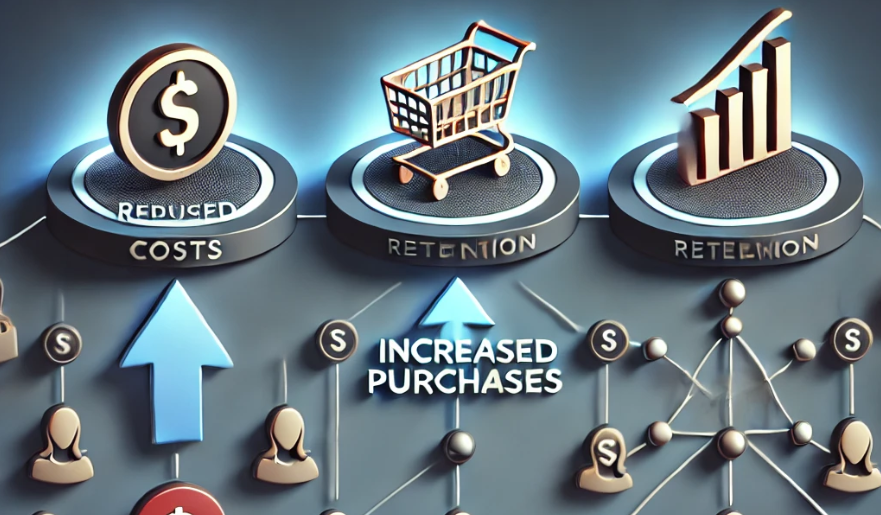In today’s competitive business landscape, acquiring new customers is only half the battle. The real challenge lies in keeping them engaged, satisfied, and loyal over time. This is where customer retention milestone tracking comes into play – a strategic approach that can significantly impact your bottom line and fuel long-term growth.
Understanding Customer Retention Milestones
Customer retention milestones are specific points in the customer lifecycle that indicate progress, achievement, or potential risk of churn. These milestones serve as checkpoints, allowing businesses to gauge the health of their customer relationships and take proactive measures to enhance satisfaction and loyalty.
The Financial Impact of Customer Retention
Before diving into the intricacies of milestone tracking, it’s crucial to understand why customer retention matters. Research by Bain & Company reveals that increasing customer retention rates by just 5% can boost profits by 25% to 95%. This stark difference in profitability stems from several factors:
- Reduced acquisition costs: Retaining existing customers is significantly cheaper than acquiring new ones.
- Increased purchase frequency: Loyal customers tend to buy more often and spend more per transaction.
- Higher likelihood of referrals: Satisfied customers become brand advocates, bringing in new business through word-of-mouth.
Mapping the Customer Lifecycle
To effectively track retention milestones, businesses must first understand the customer lifecycle. While the specifics may vary by industry, most customer journeys can be broken down into five key stages:
- Acquisition: The initial point of contact and conversion.
- Onboarding: The process of getting the customer set up and familiar with your product or service.
- Adoption: The period when the customer begins to use your offering regularly.
- Retention: The ongoing relationship and continued use of your product or service.
- Expansion: Opportunities for upselling, cross-selling, or increased usage.
Within each of these stages, there are critical milestones that businesses should track. For example:
Acquisition:
- First purchase or sign-up
- Completion of profile or account setup
Onboarding:
- Completion of product tutorial or training
- First successful use of core features
Adoption:
- Reaching a specific usage frequency (e.g., logging in 3 times per week)
- Achieving a predetermined success metric (e.g., sending 100 emails through your platform)
Retention:
- Renewal of subscription or repeat purchase
- Engagement with customer support or community forums
Expansion:
- Upgrade to a higher-tier plan
- Purchase of additional products or services
Key Metrics for Tracking Customer Retention Milestones
To effectively monitor these milestones, businesses need to focus on specific metrics and Key Performance Indicators (KPIs). Some essential metrics include:
- Customer Lifetime Value (CLV): The total revenue a business can expect from a single customer account throughout the business relationship.
- Churn Rate: The percentage of customers who stop using your product or service within a given time frame.
- Net Promoter Score (NPS): A measure of customer satisfaction and loyalty based on their likelihood to recommend your product or service.
- Customer Engagement Score: A composite metric that takes into account various factors such as product usage, support interactions, and community participation.
- Time to Value: The duration it takes for a customer to realize the value of your product or service.
- Milestone Completion Rate: The percentage of customers who successfully reach each defined milestone.
Data Collection and Analysis: The Foundation of Milestone Tracking
Effective milestone tracking relies on accurate and comprehensive data. Businesses should leverage a combination of data sources, including:
- Customer Relationship Management (CRM) systems
- Product usage analytics
- Customer support interactions
- Surveys and feedback forms
- Social media sentiment analysis
Once collected, this data needs to be analyzed to extract actionable insights. Advanced analytics techniques, such as cohort analysis and predictive modeling, can help businesses identify patterns and anticipate customer behavior.
Leveraging Technology for Milestone Tracking
Modern technology plays a crucial role in streamlining the process of milestone tracking. Customer success platforms like Gainsight, ChurnZero, and ClientSuccess offer specialized tools for monitoring customer health, automating milestone-based workflows, and predicting churn risks.
These platforms integrate with existing CRM systems and other data sources to provide a holistic view of the customer journey. They often include features like:
- Customizable dashboards for tracking key metrics
- Automated alerts for milestone achievements or missed targets
- Playbooks for customer success teams to follow based on milestone data
- Predictive analytics to identify at-risk customers
Best Practices and Success Stories
Implementing an effective milestone-tracking system requires careful planning and execution. Here are some best practices to consider:
- Align milestones with customer goals: Ensure that your defined milestones reflect outcomes that matter to your customers, not just your business.
- Personalize the approach: Different customer segments may have different milestones. Tailor your tracking and interventions accordingly.
- Act on the data: Don’t just collect data – use it to drive proactive outreach and personalized experiences.
- Continuously refine: Regularly review and adjust your milestones based on customer feedback and changing business needs.
- Involve cross-functional teams: Customer retention is not just the responsibility of the customer success team. Involve product, marketing, and sales teams in the milestone tracking process.
Success Story: Slack’s Approach to Milestone Tracking
Slack, the popular team communication platform, has built its success on a strong focus on customer retention. They track key milestones such as:
- Number of messages sent in the first week
- Percentage of team members who have sent a message
- Integration of third-party apps
By closely monitoring these milestones, Slack can identify teams that may be struggling with adoption and provide targeted assistance. This approach has contributed to their impressive 143% net dollar retention rate, meaning the average customer not only stays but significantly increases their spending over time.
The Future of Customer Retention Milestone Tracking
As technology continues to evolve, so too will the capabilities for milestone tracking. Some emerging trends to watch include:
- AI-powered personalization: Machine learning algorithms will enable even more granular and personalized milestone tracking, tailoring the customer journey in real-time.
- Predictive analytics: Advanced models will not only identify at-risk customers but also prescribe the most effective retention strategies.
- Internet of Things (IoT) integration: For products with physical components, IoT sensors will provide real-time usage data, allowing for more accurate milestone tracking.
- Voice of Customer (VoC) analysis: Natural language processing will enable businesses to extract deeper insights from customer feedback, identifying new milestones and pain points.
Conclusion: The Path to Sustainable Growth
Customer retention milestone tracking is not just a nice-to-have feature – it’s a critical component of sustainable business growth. By systematically monitoring and responding to key moments in the customer journey, businesses can significantly improve retention rates, boost customer lifetime value, and drive long-term success.
As you embark on your milestone-tracking journey, remember that it’s an iterative process. Start with the basics, learn from your data, and continuously refine your approach. With persistence and the right tools, you’ll be well on your way to building a loyal customer base that fuels your business growth for years to come.

Whether you’re a startup founder or an established business leader, investing in customer retention milestone tracking is a strategic move that will pay dividends in the long run. If you need help crafting the perfect pitch to secure resources for your customer retention initiatives, consider working with a Pitch Deck Consultant to effectively communicate the value of this critical business strategy.








